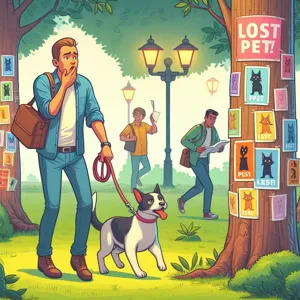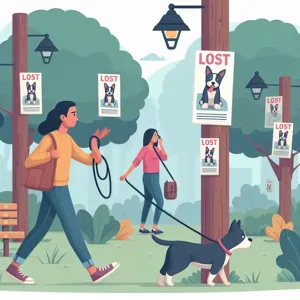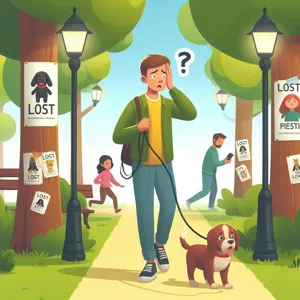In a world increasingly dominated by screens and solitary pursuits, the joy of reading often feels like a personal journey taken in isolation.
But what if you could transform that solitary adventure into a vibrant social experience? Enter the concept of creating a social reading atmosphere, where book lovers come together to share their thoughts, insights, and passions for literature. Whether through intimate book clubs, virtual reading groups, or lively literary events, the act of turning pages together can foster a sense of community and connection that enriches the reading experience. In this post, we’ll explore innovative ways to engage with fellow bibliophiles, discuss the power of shared narratives, and highlight the importance of building a supportive network of readers who inspire and challenge each other. Join us as we delve into the delightful world of social reading and discover how it can ignite your love for books like never before!
1. Introduction to Social Reading

In an age where digital interactions often eclipse face-to-face connections, the concept of social reading emerges as a refreshing antidote. Social reading is not just about consuming literature in isolation; it’s about sharing experiences, thoughts, and emotions that arise from the pages of a book with a community of fellow readers. Imagine curling up with a captivating novel and having the ability to instantly discuss its twists and turns with friends or strangers from around the globe. This is the essence of social reading—a vibrant, interactive way to engage with literature and forge connections with others who share your passion for books.
With the rise of social media platforms and specialized reading apps, the barriers to connecting with like-minded bibliophiles have never been lower. Readers can join virtual book clubs, participate in live discussions, or even collaborate on reading challenges that ignite their collective love for literature. Whether it’s through sharing quotes, posting reviews, or hosting virtual read-alongs, social reading allows individuals to dive deeper into stories while fostering a sense of community and belonging.
But social reading transcends mere discussion; it creates a space for personal growth and exploration. Readers are exposed to diverse perspectives, genres they may have never considered, and recommendations that can lead them on unexpected literary journeys. This communal approach transforms reading from a solitary endeavor into a shared experience, enriching the lives of those involved and enhancing their enjoyment of the written word.
As we embark on this exploration of social reading, we’ll delve into its benefits, the platforms that facilitate these connections, and tips on how to create your own engaging social reading experience. Whether you’re a seasoned bookworm or just beginning your reading journey, join us as we turn pages together and discover the joy of connecting with fellow book lovers.
2. The Benefits of Reading in a Community
Reading is often perceived as a solitary activity, but when embraced within a community, it transforms into a vibrant and enriching experience. Engaging with fellow book lovers offers a multitude of benefits that can enhance both your understanding of literature and your enjoyment of the reading process.
First and foremost, discussing books with others encourages deeper comprehension. Different perspectives can shed light on themes, characters, and plots that you might not have considered on your own. When you share your thoughts in a group setting, you open the door to lively debates and discussions that challenge your viewpoints and invite you to think critically. This collaborative exploration of ideas not only broadens your literary horizons but also fosters a sense of intellectual curiosity.
Moreover, reading within a community creates a supportive environment where individuals can share their reading goals and celebrate their achievements together. Whether it’s a monthly book club or an online forum, having a group to turn to for recommendations and encouragement can motivate you to tackle books you might have otherwise overlooked. This camaraderie builds accountability—knowing that others are also reading the same title can inspire you to keep pace and engage with the material in a more meaningful way.
Additionally, being part of a reading community cultivates friendships that transcend the pages of the books themselves. These connections often lead to social gatherings and events centered around literature, such as author meet-and-greets, themed parties, or even literary-themed game nights. Such interactions can deepen your appreciation for not just the stories you read but also the people who share your passion.
Lastly, a community amplifies the joy of reading. Sharing memorable quotes, favorite passages, or even the occasional spoiler-laden gossip about a plot twist can make the experience more fun and engaging. The laughter, tears, and excitement that come with discussing stories with others create lasting memories and forge bonds that can last a lifetime.
In summary, reading in a community enriches your literary journey by enhancing comprehension, fostering accountability, building friendships, and amplifying enjoyment. Embrace the power of connection and watch your reading experience transform into a dynamic and fulfilling adventure alongside fellow book lovers.
3. Identifying Your Reading Preferences and Goals

Identifying your reading preferences and goals is the first step in crafting a fulfilling and enriching social reading experience. Whether you’re a seasoned bibliophile or just beginning to explore the vast world of literature, understanding what fuels your passion for reading will help you connect with like-minded individuals and cultivate meaningful discussions.
Start by reflecting on the genres that captivate you most—do you gravitate towards gripping thrillers, heartwarming romance, or thought-provoking non-fiction? Perhaps you find joy in the whimsical realms of fantasy or prefer the haunting beauty of literary fiction. Pinpointing these preferences allows you to engage with communities that share your interests and discover new titles that resonate with your tastes.
Next, consider your reading goals. Are you aiming to read a specific number of books this year, or are you focused on diversifying your literary palate? Maybe you want to delve deeper into a particular genre or author, or even explore themes that challenge your perspectives. Setting clear, achievable goals not only enhances your reading experience but also provides a sense of accomplishment as you share your progress with others.
Engaging in discussions about your reading preferences and goals within a social reading platform can lead to insightful exchanges and recommendations. You’ll find that other readers may have similar aspirations, and together, you can celebrate your victories, share strategies, and motivate each other to push the boundaries of your reading journeys. By identifying your preferences and goals, you lay the groundwork for a vibrant community of fellow book lovers eager to turn pages together.
4. Choosing the Right Platform for Social Reading
When it comes to creating a social reading experience, selecting the right platform is crucial to fostering connections among fellow book lovers. With a myriad of options available, from dedicated book communities to broader social media networks, the decision requires thoughtful consideration of your target audience and goals.
Platforms like Goodreads and Bookstagram (Instagram’s book community) offer unique features tailored specifically for readers. Goodreads provides a space for users to track their reading, write reviews, and engage in discussions through groups and forums, making it an ideal choice for those who prefer a structured environment. Here, readers can easily share books they’ve read, create lists of their favorites, and participate in reading challenges that encourage engagement and interaction.
On the other hand, Instagram’s Bookstagram community thrives on visual storytelling. This platform allows users to share aesthetically pleasing photos of their current reads, paired with engaging captions that spark conversation. The use of hashtags like #Bookstagram, #BookLovers, and #ReadingCommunity can help your content reach a wider audience, attracting fellow readers who share similar tastes and interests.
If you’re leaning towards a more interactive experience, consider platforms like Discord or Slack, which allow for real-time conversations and book discussions in a more casual setting. These platforms enable readers to create dedicated channels for specific genres, author book clubs, or even themed reading events, fostering a sense of community and belonging.
Ultimately, the right platform for social reading should align with your community’s preferences and reading habits. Whether you choose a structured site like Goodreads or a visually driven platform like Instagram, the key is to cultivate an inviting space where readers can connect, share their passion for books, and create lasting friendships through the stories that resonate with them. By choosing wisely, you’ll lay the groundwork for a thriving and engaged reading community that celebrates the joy of books together.
5. Creating a Book Club: Steps and Best Practices

Creating a book club can be a rewarding venture that not only enhances your reading experience but also fosters connections with fellow book lovers. Whether you’re a seasoned bibliophile or just starting to explore the world of literature, launching a book club can be a delightful way to engage with others who share your passion for reading. Here are the essential steps and best practices to help you get started.
**1. Define Your Purpose and Theme:**
Before diving into logistics, take a moment to reflect on the purpose of your book club. Is it centered around a specific genre, such as mystery, fantasy, or non-fiction? Or perhaps you want to explore diverse voices and themes? Defining the club’s focus will attract like-minded individuals and set the tone for your discussions.
**2. Gather Your Members:**
Once you have a clear vision, it’s time to invite members. Reach out to friends, family, or colleagues who love reading, or use social media platforms and local community boards to find fellow book enthusiasts. Aim for a group size that encourages lively discussion—typically, 5 to 15 members is ideal.
**3. Choose a Platform:**
Decide whether your book club will meet in person, online, or a hybrid of both. In-person meetings can create a cozy and intimate atmosphere, while online meetings offer flexibility and convenience. If you opt for virtual gatherings, consider using platforms like Zoom or Google Meet to facilitate discussions.
**4. Set a Regular Schedule:**
Consistency is key to maintaining engagement within your book club. Establish a regular meeting schedule—weekly, bi-weekly, or monthly—and stick to it. This helps members plan ahead and ensures everyone can participate.
**5. Curate Your Reading List:**
Collaborate with your members to create a reading list that reflects the interests of the group. You can take turns choosing books or even have a voting system to select the next read. This not only keeps the reading fresh but also gives everyone a chance to share their favorites with the group.
**6. Facilitate Meaningful Discussions:**
As the host, it’s your role to guide the conversation, but remember to encourage participation from all members. Prepare discussion questions in advance to spark dialogue, and be open to diverse interpretations of the text. Create a safe space where everyone feels comfortable sharing their thoughts and opinions.
**7. Foster a Sense of Community:**
Cultivate camaraderie among your members by organizing fun activities beyond book discussions. Consider hosting themed gatherings, movie nights based on books, or author meet-and-greets. Creating a strong sense of community will make your book club feel more like a family of fellow readers.
By following these steps and best practices, you’ll be well on your way to creating a vibrant book club that deepens your love for reading and connects you with others who share your enthusiasm. So, gather your fellow book lovers, pick your first read, and let the literary journey begin!
6. Organizing Virtual or In-Person Reading Events
Organizing virtual or in-person reading events can breathe life into your social reading experience, transforming solitary book journeys into vibrant communal explorations. These gatherings offer an opportunity to connect with fellow book lovers, share insights, and immerse yourselves in the world of literature together.
When planning a virtual reading event, platforms like Zoom or Discord can facilitate engaging discussions, allowing participants from all corners of the globe to join in. You might consider hosting themed reading nights where everyone reads the same book or a specific genre, followed by a lively discussion. Incorporating fun elements like polls, quizzes, or breakout rooms can also enhance interaction, making the experience more dynamic and enjoyable.
For those who prefer the warmth of face-to-face interactions, in-person reading events can be a delightful way to foster connections. Consider partnering with local bookstores or libraries to host book club meetings, author signings, or panel discussions. Creating a cozy atmosphere—perhaps with refreshments, comfortable seating, and ambient lighting—encourages participants to engage deeply with one another and the stories they love.
In both settings, promoting your events through social media, newsletters, or word of mouth can help build excitement and gather a diverse group of attendees. Whether virtual or in-person, these reading events become more than just gatherings; they transform into experiences that nurture friendships, spark new ideas, and deepen everyone’s love for literature. By providing a platform for book discussions and connections, you’re not just sharing stories—you’re creating a community of passionate readers ready to turn pages together.
7. Utilizing Social Media for Book Discussions

In today’s digital age, social media isn’t just a platform for sharing personal updates; it has become an invaluable tool for fostering community and igniting conversations. For book lovers, leveraging social media for book discussions opens up a vibrant avenue to connect with fellow readers, share insights, and explore diverse literary perspectives.
Imagine a virtual space buzzing with excitement where readers across the globe gather to discuss their latest reads. Platforms like Instagram, Twitter, Facebook, and even TikTok have become sanctuaries for book enthusiasts to dive deep into discussions, share recommendations, and express their thoughts about beloved characters and plot twists. Creating a dedicated hashtag for your book club or reading group can help centralize conversations, making it easier for participants to engage and share their opinions.
For instance, hosting a live Twitter chat or an Instagram Live session can create an interactive experience where readers can ask questions and share their views in real-time. These discussions not only enhance the reading experience but also allow participants to forge bonds with others who share their passion for literature.
Additionally, consider creating themed posts or challenges, such as ‘Book of the Month’ discussions or ‘Throwback Thursdays’ featuring classic reads. Encouraging your followers to post their thoughts and tag your page will not only increase engagement but also expand your community organically. By actively participating in these discussions, you not only enrich your own reading journey but also cultivate a supportive network of fellow book lovers eager to explore new titles and genres together.
Incorporating social media into your reading routine not only amplifies discussions but also transforms solitary reading into a shared adventure, making literature a collective experience that connects hearts and minds across the globe. So, grab your favorite book, share your thoughts online, and watch as a world of literary camaraderie unfolds before you.
8. Engaging Activities to Enhance the Reading Experience
Engaging activities can transform the solitary act of reading into a vibrant communal experience, allowing book lovers to connect on deeper levels. Consider organizing themed book discussions where participants dive into a specific genre or author. These gatherings can take place in cozy local cafes or even virtually, enabling a broader reach. Encourage attendees to share their insights, favorite quotes, and personal reflections, fostering a rich tapestry of perspectives that enhances everyone’s understanding of the book.
Another fantastic activity is a book swap event. Invite community members to bring their gently used books and exchange them for new reads. This not only refreshes personal libraries but also sparks conversations about the stories that resonate with each individual. To further enrich the experience, consider incorporating book-themed crafts or DIY projects, like creating bookmarks or artistic book covers, which can serve as a fun, hands-on activity that ties back to the reading experience.
For those who enjoy a bit of friendly competition, host a reading challenge. Set goals, whether it’s a certain number of books read in a month or exploring a variety of genres. This can be paired with social media hashtags, allowing participants to share their progress and book recommendations online. You might even consider offering small prizes or recognition for those who complete the challenge, adding an element of excitement and motivation.
Lastly, think about organizing author Q&A sessions or virtual meet-and-greets. This not only provides readers with unique insights into the creative process but also allows them to ask questions and engage with their favorite authors, forging a connection that goes beyond the pages of a book.
By incorporating these engaging activities, you can create a social reading experience that encourages interaction, fosters community, and ultimately enhances the joy of reading. Through shared discussions, exchanges, and creative endeavors, fellow book lovers will find themselves more connected and inspired than ever before.
9. How to Foster Meaningful Conversations about Books
Fostering meaningful conversations about books is essential for creating a vibrant social reading experience that resonates with fellow book lovers. To kickstart these discussions, consider establishing a welcoming environment where everyone feels comfortable sharing their thoughts and opinions. This can be achieved through online platforms, such as dedicated reading groups on social media or book-focused forums, as well as in-person gatherings like book clubs at local cafés or libraries.
One effective way to encourage engagement is by posing open-ended questions that invite deeper reflection. Instead of simply asking, “Did you like the book?” try framing it as, “What themes in the book resonated with you the most, and why?” This approach not only stimulates thoughtful conversation but also allows participants to explore different perspectives and interpretations of the text.
In addition, consider incorporating themed discussions or reading challenges that prompt readers to explore specific genres, authors, or topics. These initiatives can spark excitement and curiosity, leading to richer conversations that unify members around shared experiences. For example, a month dedicated to feminist literature could encourage participants to discuss the societal implications of the stories and how they relate to current events, fostering a sense of community and connection.
Don’t forget to actively listen and validate each other’s opinions. Acknowledge diverse viewpoints and encourage participants to expand on their ideas. This mutual respect creates a safe space where everyone feels valued, ultimately deepening the connection between readers.
Lastly, leveraging multimedia can enhance discussions. Share related articles, interviews with authors, or even book trailers to provide additional context and stimulate conversation. By integrating various forms of content, you enrich the reading experience and inspire lively debates that keep the conversation going long after the last page has been turned.
By intentionally cultivating these meaningful conversations, you’ll not only deepen the bonds between fellow book lovers but also create a dynamic reading community that thrives on shared insights and collective enthusiasm.
10. Sharing Reviews and Recommendations
Sharing reviews and recommendations is a powerful way to cultivate a vibrant social reading experience that connects book lovers. In a world saturated with content, the opinions of fellow readers can cut through the noise, guiding you toward your next great read or helping you avoid a literary misstep. Whether you’re raving about the latest bestseller or thoughtfully critiquing a classic novel, your insights can spark engaging conversations and foster a sense of community among readers.
One effective platform for sharing reviews is social media. Utilizing sites like Instagram and TikTok to post visually appealing book reviews or recommendations can captivate your audience. Aesthetic photos of book covers paired with your personal thoughts invite others to jump into the discussion. Meanwhile, platforms like Goodreads offer a more structured environment for tracking your reading journey while engaging with others through reviews, ratings, and reading challenges.
Don’t shy away from creating videos or podcasts to share your thoughts, either. A heartfelt video review that showcases your passion for a book can resonate on a deeper level than words on a page. Likewise, hosting book club discussions or author interviews can provide varied perspectives and enrich the reading experience.
Encourage interaction by asking open-ended questions at the end of your reviews. Invite your followers to share their own opinions or suggest similar titles, creating a dialogue that can lead to new friendships and expanded reading lists. By actively participating in this sharing culture, you not only enhance your own reading experience but also create a welcoming space where fellow book lovers can bond over their shared passion for literature. As you exchange recommendations and share your thoughts, you’re not just promoting books—you’re building a community of voracious readers eager to turn the pages together.
11. Collaborating with Authors and Publishers
Collaborating with authors and publishers can elevate your social reading experience to new heights, creating a vibrant community that draws book lovers together. When you partner with authors, you not only gain unique insights into their creative processes, but you also provide your audience with exclusive content that enhances their reading journey. Imagine hosting live Q&A sessions or virtual book launches where readers can interact directly with their favorite authors, ask questions, and delve deeper into the stories behind the books they cherish. This personal touch fosters a sense of connection and intimacy that readers crave.
Additionally, working with publishers allows you to gain access to advanced reader copies (ARCs) and promotional materials, making it easier to organize exciting giveaways or themed reading events. By curating a selection of upcoming releases, you can keep your community engaged and buzzing with anticipation. Consider creating a monthly book club featuring a new title from a collaborating publisher, complete with discussion guides, author interviews, and exclusive behind-the-scenes content. This not only enriches the reading experience but also helps your community feel like insiders in the literary world.
Beyond events and discussions, consider collaborating on social media campaigns that spotlight authors and their works. Share their stories, insights, and personal anecdotes, giving your readers a glimpse into the lives of the creators behind the words. When you highlight the voices of authors and publishers, you help to cultivate a rich tapestry of literary connections that keeps your community engaged and eager to turn the next page together. In this way, collaboration becomes a powerful tool to foster a shared love for reading, turning solitary moments into a collective celebration of stories and ideas.
12. Exploring Different Genres Together
Exploring different genres together is one of the most enriching aspects of a social reading experience. Picture this: a diverse group of book lovers, each bringing their unique tastes and perspectives to the table. Whether it’s the spine-tingling thrill of a mystery novel, the heartwarming journey of a romance, or the thought-provoking narratives of literary fiction, venturing into various genres can ignite lively discussions and broaden horizons.
When readers step outside their comfort zones, they often discover hidden gems they might not have picked up otherwise. Organizing genre-themed reading challenges or book clubs can encourage participants to delve into the unfamiliar, fostering a sense of camaraderie and shared adventure. Imagine a monthly meet-up where members delve into the surreal worlds of magical realism one month, followed by a deep dive into historical fiction the next. Each genre brings with it a different mood, style, and set of themes, creating a rich tapestry of conversation.
As you explore different genres together, consider incorporating activities that enhance the experience. Host themed discussions where everyone can share their thoughts and feelings about the books, or even organize genre-inspired events, like a mystery night complete with puzzles and clues, or a cozy gathering for a romantic read-along. By creating a space where readers can express their opinions and engage with one another, you cultivate a community that thrives on diverse literary experiences.
Ultimately, exploring different genres together not only strengthens the bonds between fellow book lovers but also enriches individual reading journeys. It’s an invitation to embrace the unexpected, celebrate diversity in storytelling, and connect with others who share a passion for the written word. So, gather your fellow readers and embark on this literary adventure, discovering new favorites along the way!
13. Addressing Challenges in Group Reading Dynamics
When embarking on the journey of group reading, it’s essential to recognize that, like any collaborative endeavor, challenges will inevitably arise. Addressing these dynamics is key to fostering a harmonious and engaging environment for all participants. One common challenge is differing reading paces; while some members may devour chapters in a matter of days, others may take their time to savor each word. To combat this, consider establishing a flexible reading schedule that accommodates varied speeds, allowing everyone to contribute meaningfully without the pressure of falling behind.
Another hurdle often encountered is the diversity of opinions and interpretations. While this can enrich discussions, it can also lead to disagreements that might cause tension within the group. Encouraging an atmosphere of respect and open-mindedness is vital. Set ground rules for discussions, such as actively listening before responding and embracing diverse perspectives. This will help ensure that everyone feels valued and heard, turning potential conflicts into opportunities for deeper understanding.
Additionally, logistical issues such as scheduling conflicts can pose a barrier to group cohesion. To mitigate this, leverage technology by utilizing online platforms for virtual meetings or discussions. This not only makes it easier for everyone to participate but also allows for asynchronous communication, where members can share their thoughts and insights at their convenience.
Lastly, remember the importance of keeping the group engaged and motivated. Rotate responsibilities, such as leading discussions or selecting the next book, to foster a sense of ownership and investment among members. By addressing these challenges head-on and creating a supportive framework, your reading group can thrive, transforming every page turned into a shared experience that strengthens the bond between fellow book lovers.
14. The Role of Technology in Social Reading
In an age where technology seamlessly intertwines with everyday life, its role in enhancing the social reading experience cannot be overstated. Gone are the days when book lovers would rely solely on in-person gatherings and discussions in local cafes or libraries. Today, technology offers a plethora of platforms that not only facilitate the sharing of thoughts and opinions but also foster a vibrant community of readers from diverse backgrounds and locations.
Social media platforms have emerged as virtual book clubs, where readers can share their latest reads, post reviews, and engage in lively discussions. Hashtags like #Bookstagram and #BookTwitter have cultivated a sense of belonging among readers, allowing them to connect over shared interests, recommend titles, and even challenge each other with reading lists or themed readathons. Bookish influencers and content creators have turned their passion into a thriving online presence, inspiring others to join the conversation and explore genres they might never have considered otherwise.
Moreover, dedicated platforms such as Goodreads have revolutionized the way we track our reading journeys. These sites allow users to create personalized bookshelves, rate books, and participate in discussions within user-generated groups. By facilitating interactions through comments and messages, they provide a space for readers to dive deeper into analyses and recommendations, creating a richer literary experience.
The rise of audiobooks and e-readers has also transformed social reading dynamics. With features like social sharing and integrated forums, platforms such as Audible or Kindle enable readers to discuss passages in real-time, fostering spontaneous conversations about themes and narratives as they read. Furthermore, virtual book clubs and live-streamed author events have bridged geographical distances, offering readers the opportunity to engage with authors and fellow fans alike, irrespective of physical location.
As we embrace the technological tools at our disposal, we not only enhance our reading experiences but also build lasting connections with fellow book lovers. By leveraging the power of technology, we can create a shared space where literature becomes a collective journey, inspiring dialogue, friendship, and a deeper appreciation for the written word.
15. Conclusion: The Joy of Connecting Through Books
In conclusion, the joy of connecting through books transcends the simple act of reading; it weaves together the threads of shared experiences, personal growth, and the discovery of new perspectives. As we turn the pages of our favorite novels and explore the depths of compelling narratives, we find not just stories, but potential friendships and communities waiting to be formed.
Creating a social reading experience allows us to break free from the solitude that often accompanies reading. Whether through book clubs, online forums, or social media platforms dedicated to literary discussions, these connections enhance our understanding and appreciation of literature. They provide us with fresh insights, ignite stimulating conversations, and introduce us to new genres or authors we might not have encountered otherwise.
As we champion the act of sharing our thoughts and feelings about books, we also cultivate an environment where diverse voices can emerge. Each reader brings their unique interpretation and life experiences to the table, enriching the dialogue and fostering empathy among members of the reading community.
So, let us celebrate this shared passion for literature by continuing to seek out and foster connections with fellow book lovers. Together, we can create a vibrant tapestry of stories and friendships that not only deepen our love for reading but also remind us of the beautiful connections that books can forge. Embrace the joy of connecting through books, and watch as the world of literature opens up in ways you never imagined. Happy reading!
In conclusion, creating a social reading experience is a powerful way to deepen your connection with literature and fellow book lovers alike. By embracing the tips and strategies shared in this post, you can foster engaging discussions, share recommendations, and cultivate a community that celebrates the joys of reading. Remember, the magic of a good book multiplies when shared with others, and each page turned together brings you closer to new friendships and insights. So gather your fellow readers, whether in-person or virtually, and embark on this literary journey together. Happy reading, and may your book club conversations be as rich and vibrant as the stories you explore!














